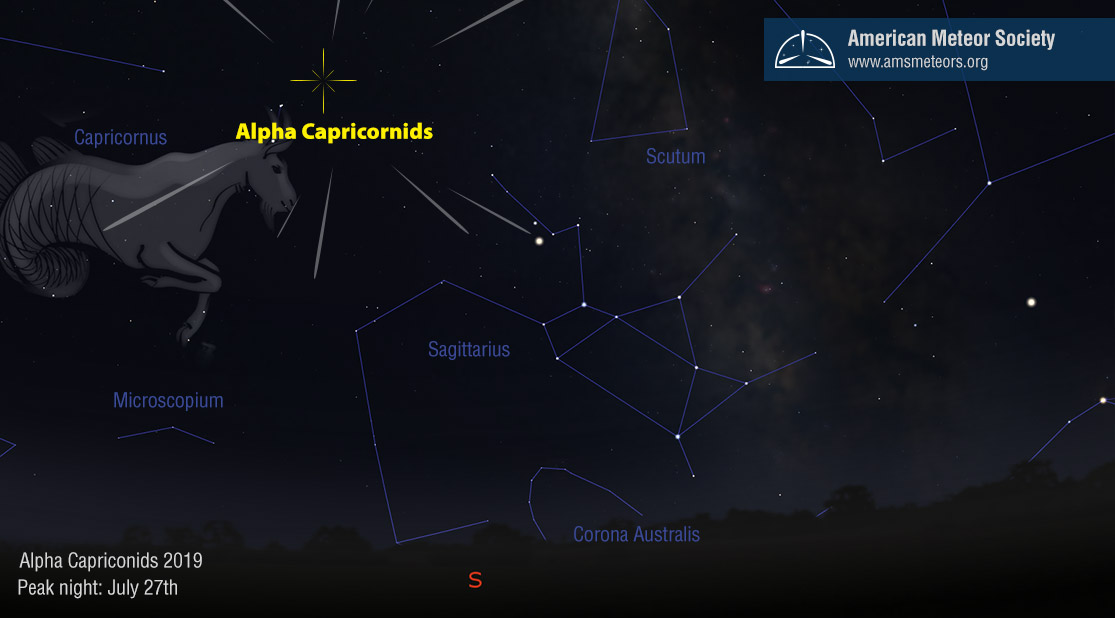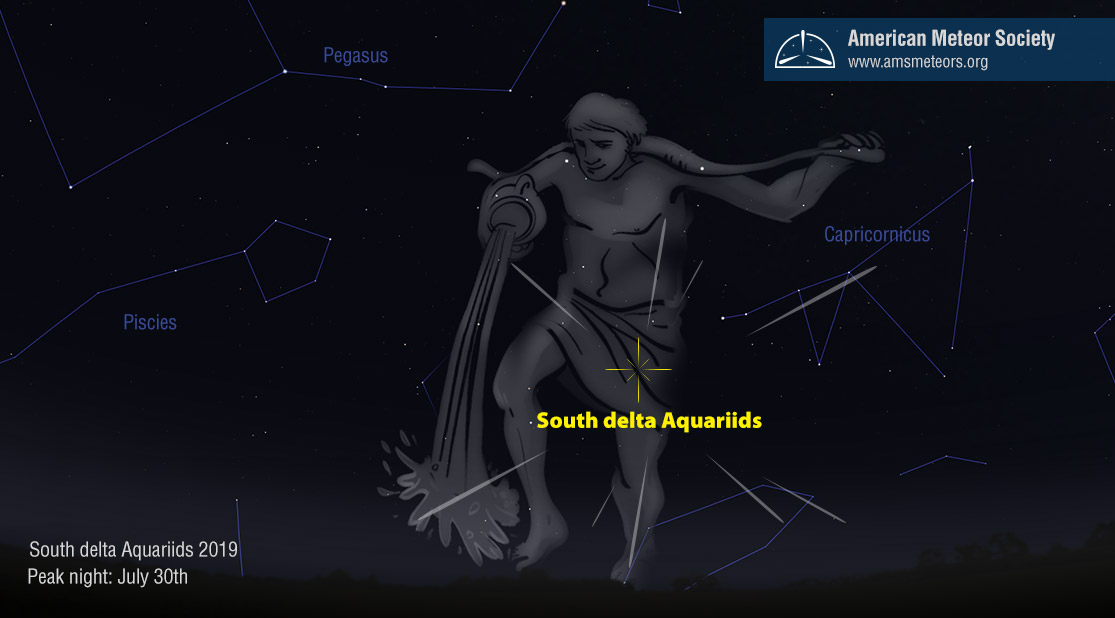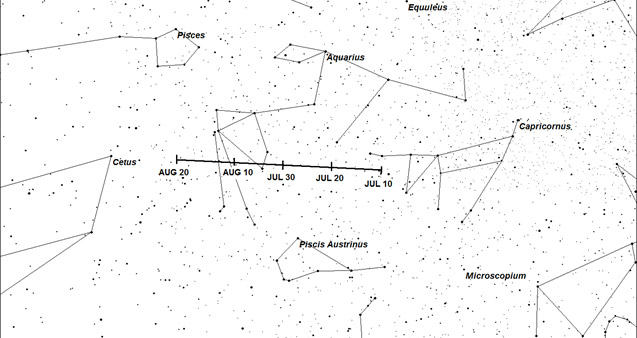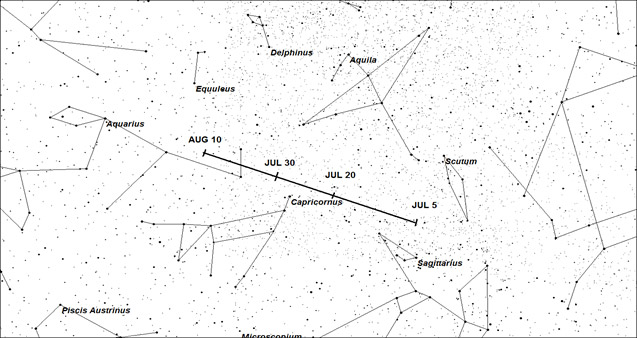With the Perseids badly mooned in August, the summer highlights will occur in July when the alpha Capricornids (CAP) and South delta Aquariids (SDA) reach maximum activity. The CAP’s are the first to before active, around July 3rd. Rates will only be 1 shower member per night the first half of July. Rates should increase to near 1 per hour from the 15th through the 22nd. The CAP’s will have a bright moon to contend with during this period but circumstances improve once the moon reaches last quarter on July 24th. Rates will slowly climb the last week of the month. They will never surpass 3-4 per hour but your chances of witnessing a CAP fireball increases during this period. The radiant lies in eastern Sagittarius in early July and is positioned just north of the naked eye double star alpha Capricornii at maximum on July 27th. Rates dwindle a bit more rapidly than they climb and the last CAP should appear near August 11, just before the Perseids reach maximum activity. The radiant rises near dusk for observers in mid-northern latitudes and is best placed highest above the horizon near 0100 local daylight saving time.

The South delta Aquariids become active around July 21st and will reach maximum activity on July 30th. The radiant lies in a blank area between the constellations of Capricornus and Aquarius. On the night of maximum activity the radiant lies just west of the 3rd magnitude star delta Aquarii, which is one of the brighter stars in the constellation. The SDA’s are medium velocity meteors and tend to be on the faint side. Rates at maximum activity will usually range from 10-30 SDA’s per hour, depending on your latitude. For observers in mid-northern latitudes, the radiant lies low in the south and hourly rates will lie closer to 10. The radiant is best placed in the southern tropics where it passes overhead and rates there will be closer to 30 at maximum. This radiant rises between 22:00-23:00 local daylight saving time and is best placed due south between 3:00 and 4:00 LDST.

One last note on the Perseids. They will peak on August 13 this year, which is two days prior to the full moon. Under such circumstances Perseid rates will usually be reduced by at least 75%. These rates are still better than most nights of the year. So if your sky is clear and transparent it would not be a waste to try and view this activity. Just be certain that you view in the opposite direction of the moon so that you can see the faintest possible meteors. We would be interested to hear how well you did under such circumstances!
 American Meteor Society
American Meteor Society


I have to prepare an photo essay about shooting star and meteor showers by early September. I took some great photos. So I can refuse the services of https://3hoursessay.com/ writing company.